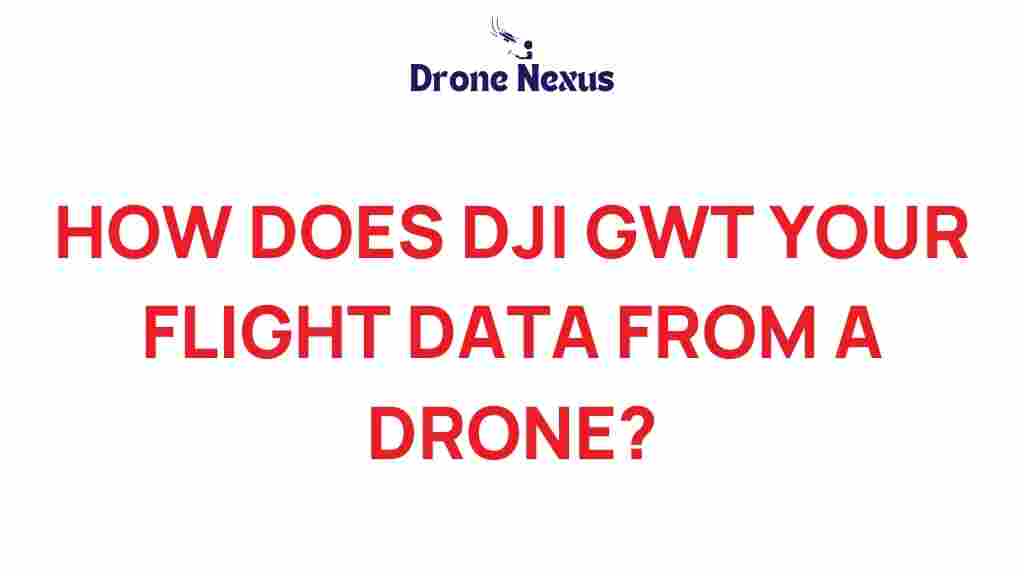Unlocking the Secrets: How DJI Gathers Your Drone Flight Data
In the rapidly advancing world of technology, drones have emerged as one of the most exciting innovations. DJI, a leader in the drone industry, has significantly contributed to the popularity and utility of drones. However, with the increasing use of these flying machines, a question arises: how does DJI gather your drone flight data? In this article, we will delve into the intricacies of DJI’s data collection methods, the importance of this data, and how it influences drone usage.
The Importance of Drone Flight Data
Before we explore how DJI gathers data, it’s essential to understand why this data is vital. Drone flight data serves multiple purposes:
- Safety: By analyzing flight patterns and incidents, DJI can enhance safety features and protocols.
- Performance Improvement: Data helps DJI optimize their drones, ensuring better performance and user experience.
- Regulatory Compliance: In many regions, drone operators are required to adhere to specific regulations, which can be monitored through data collection.
- User Experience: Understanding how users interact with their drones allows DJI to create more user-friendly interfaces and features.
How DJI Gathers Your Flight Data
Now, let’s break down the step-by-step process of how DJI collects flight data from its drones:
1. Flight Control Systems
Every DJI drone is equipped with advanced flight control systems that record various parameters during a flight. These include:
- Altitude
- Speed
- GPS coordinates
- Battery status
- Flight duration
This information is crucial for assessing the overall performance of the drone and ensuring it operates within safe limits.
2. DJI Go App
The DJI Go app, which is the primary interface for controlling DJI drones, plays a pivotal role in data collection. When users connect their drone to the app, the following data points are collected:
- Flight logs
- Geographical data
- Camera settings and usage
Users can easily access flight logs, which include a comprehensive overview of their flying history. This data is stored and can be analyzed for various insights.
3. Cloud Storage
DJI utilizes cloud storage solutions to save flight data securely. When a user flies their drone, the collected data is often uploaded to DJI’s servers. This allows for:
- Remote access to flight logs
- Data backup in case of device failure
- Analysis of aggregated data for product improvement
Users may also access their data from any device, enhancing convenience and user experience.
4. Firmware Updates
During firmware updates, DJI may collect additional data regarding the drone’s performance and any issues encountered. This data helps DJI:
- Identify bugs and performance issues
- Improve future firmware versions
- Enhance the overall safety of their products
5. User Feedback and Surveys
DJI often solicits feedback from users through surveys and forums. This qualitative data complements the quantitative data gathered from flights, providing a holistic view of user experience.
Understanding Data Privacy and Security
With the gathering of flight data comes the essential topic of data privacy. DJI takes several measures to ensure that user data is handled responsibly:
- Data Encryption: Flight data is encrypted during transmission to protect against unauthorized access.
- User Control: Users can choose how much data they wish to share with DJI.
- Compliance: DJI adheres to various regulations regarding data collection and privacy, ensuring user information is protected.
For more detailed information on DJI’s data privacy policies, you can visit their official website.
Troubleshooting Data Collection Issues
Despite the advanced technology used by DJI, users may occasionally encounter issues with data collection. Here are some common problems and their solutions:
1. Incomplete Flight Logs
If your flight logs appear incomplete, consider the following:
- Ensure your drone is properly connected to the DJI Go app during the flight.
- Check for any firmware updates that may improve data collection.
- Verify that your device has enough storage space for logging data.
2. Connectivity Issues
Connectivity problems can hinder data transmission to DJI’s servers. To troubleshoot:
- Ensure a stable internet connection on your mobile device.
- Restart the DJI Go app and reconnect your drone.
- Check for any known service outages on DJI’s platform.
3. Data Privacy Settings
If you suspect your data is not being collected due to privacy settings:
- Review your app settings to ensure that data sharing is enabled.
- Consult the DJI support pages for guidance on adjusting privacy preferences.
Conclusion
Understanding how DJI gathers drone flight data is crucial for users who wish to maximize their drone’s capabilities while ensuring compliance with safety and regulatory standards. By employing sophisticated flight control systems, utilizing the DJI Go app, and securely storing data in the cloud, DJI has created a robust framework for data collection.
In addition to technical measures, DJI prioritizes data privacy and user control, making it essential for users to stay informed about their data sharing preferences. Should you encounter any issues with data collection, the troubleshooting tips provided can help you resolve them effectively.
For those looking to enhance their experience with DJI drones, staying connected with the latest updates and user feedback through forums and surveys will ensure that you make the most of your flying experiences. Explore DJI’s offerings and learn more about their data collection methods at DJI’s official website.
This article is in the category Technology and created by DroneNexus Team
